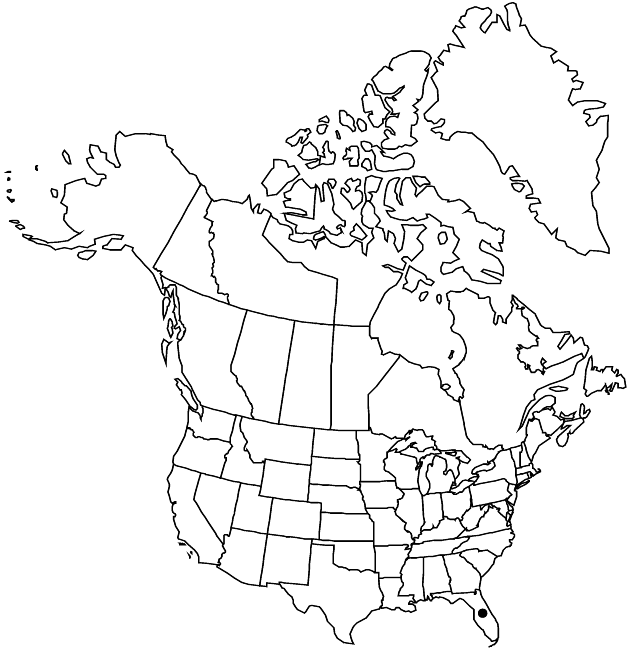Liatris ohlingerae
Contr. Gray Herb. 104: 49. 1934.
Plants 30–100 cm. Corms nearly cylindric. Stems minutely and closely villous-puberulent, glabrescent. Leaves: basal and proximal cauline (usually withering before anthesis) 1-nerved, linear, 80–150 × 1–2 (–2.5) mm, gradually reduced distally, essentially glabrous or sparsely puberulent and soon glabrescent, glanddotted. Heads (1–30) in open, corymbiform to racemiform arrays. Peduncles (spreading-ascending) 20–70 mm. Involucres hemispheric to campanulate or broadly turbinate, 17–23 × 15–20 mm. Phyllaries in 6–7 series, oblong, strongly unequal, essentially glabrous, margins with (faintly purplish) hyaline borders, ciliolate, apices rounded to obtuse. Florets ± 20–30; corolla-tubes glabrous inside. Cypselae 7–10 mm; pappi: lengths ± equaling corollas, bristles barbellate to subplumose.
Phenology: Flowering (Jul–)Aug–Nov.
Habitat: Oak scrubs, scrubby flatwoods, rosemary scrub
Elevation: 10–50 m
Discussion
Liatris ohlingerae grows in DeSoto, Highlands, and Polk counties, on Lake Wales Ridge. It is in the Center for Plant Conservation’s National Collection of Endangered Plants.
Selected References
None.
Lower Taxa
"barbellate" is not a number. "subplumose" is not a number."fine" is not a number.
